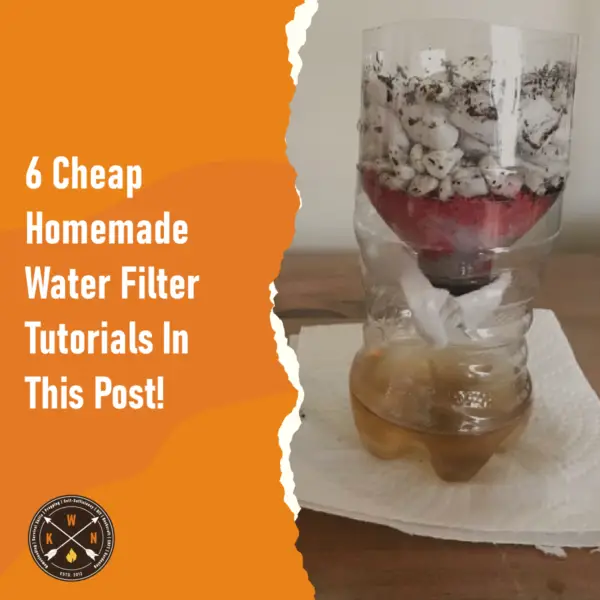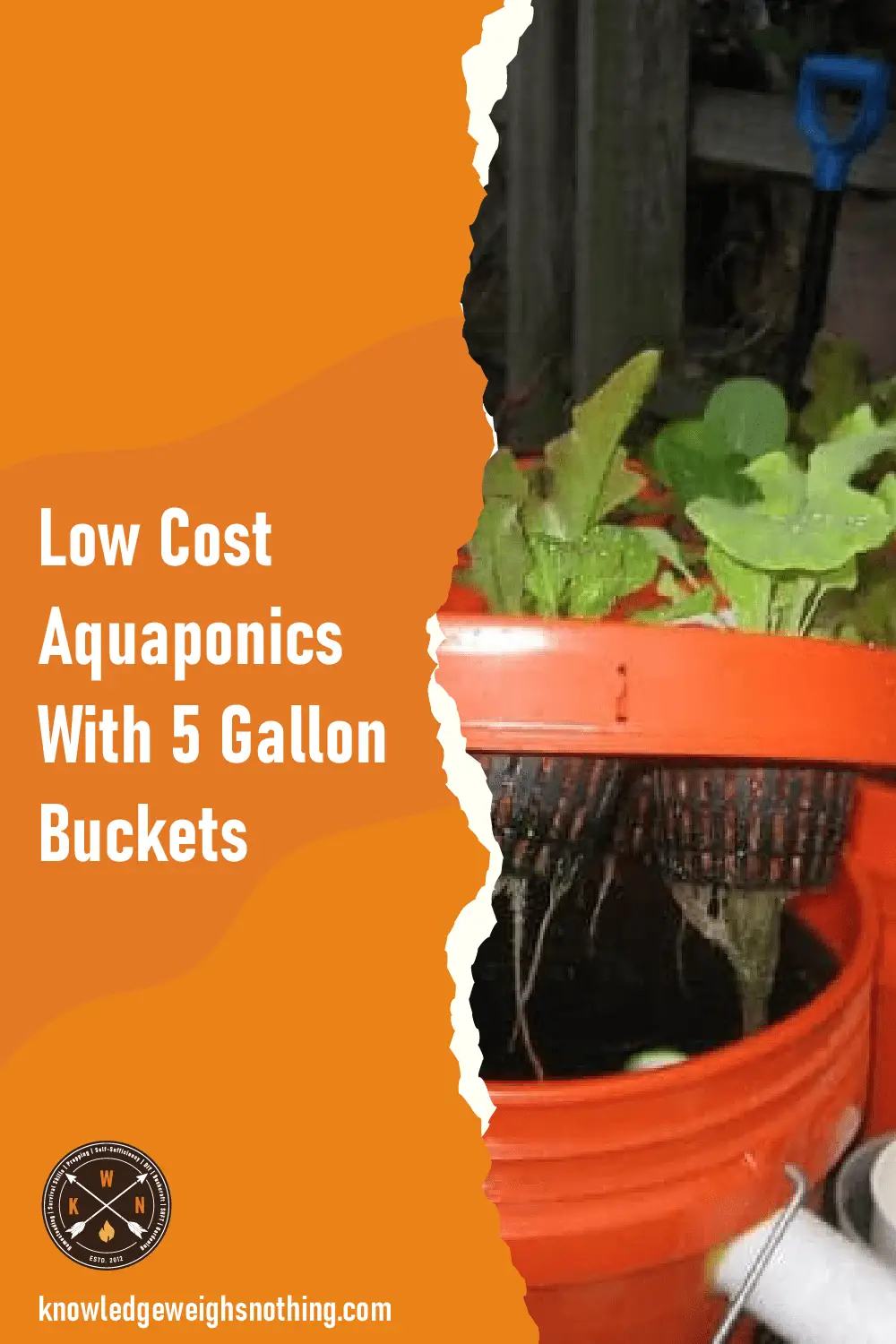
Below are six different homemade water filter tutorials. The first five are DIY filters for filtering rainwater and water from unclean water sources. The last tutorial shows how to make a homemade Berkey water filter for use in the home. This homemade Berkey filter is equally effective but around 75% cheaper!
Table of Contents
ToggleHow To Make A Bio-Sand Homemade Water Filter
Below is some additional information from Wikipedia on the effectiveness of homemade bio-sand filters
Homemade, DIY Bio-sand filters remove pathogens and suspended solids through a combination of biological and physical processes that take place in the biolayer and within the sand column. BSFs have been shown to remove 5.00-64.00% of heavy metals and 90.00-99.99% of turbidity and contaminants such as bacteria, viruses, and protozoa.
Filtration process
Pathogens and suspended solids are removed through a combination of biological and physical processes that take place in the biolayer and within the sand layer. These processes include:
- Mechanical trapping. Suspended solids and pathogens are physically trapped in the spaces between the sand grains.
- Predation. Pathogens are consumed by other microorganisms in the biolayer.
- Adsorption. Pathogens become attached to each other, suspended solids in the water and the sand grains.
- Natural death. Pathogens finish their life cycle or die because there is not enough food or oxygen for them to survive.
Removal of contaminants
Turbidity
Results for turbidity reductions vary depending on the turbidity of the influent water. Water with high turbidity looks dirty due to sand, silt and clay floating in the water. Feed turbidity in one study ranged from 1.86 to 3.9 NTU. In a study, water was obtained from sample taps of water treatment plants from three local reservoirs. It poured through a slow sand filter and results showed that turbidity decreased to a mean of 1.45 NTU. In another study using surface water, a 93% reduction in turbidity was observed. As the biofilm above the sand ripens turbidity removal increases. Although bio-sand filters do exhibit a high reduction in turbidity, slow sand filters show higher removals due to a slower filtration rate.
Heavy metals
There is limited research on the removal of heavy metals by bio-sand filters. In a study conducted in South Africa, the filter was found to have about 64% removal of iron and 5% removal of magnesium.
Bacteria
In laboratory studies, the bio-sand filter has been found to have about a 98-99% removal of bacteria. Over a time period of about two months, it was found that the bio-sand filter may increase in the removal of E. coli due to biofilm formation. The removal after this time period ranged from 97-99.99% removal depending on the daily charge volume and per cent feed water amended with primary effluent to the filter daily. The addition of primary effluent or wastewater facilitates the growth of the biofilm which aids bacterial die-off. Research in the field shows that implemented bio-sand filters reduce fewer bacteria than ones in a controlled environment. In research conducted in 55 households of Bonao, Dominican Republic, the average E. coli reduction was found to be about 93 per cent.
Viruses
Lab tests have shown that while the reduction of E. coli from these filters is quite significant, the attenuation in viruses is significantly less due to their small size. In a study using to bacteriophages, the removal ranged between 85% and 95% after 45 days of usage. A recent study has suggested that virus removal increases significantly over time, reaching 99.99% after a period of approximately 150 days.
Protozoa
In one lab test, the bio-sand filter also got greater than a 99.9% removal of protozoa. In tests for one type of protozoa, Giardia lambia had a 100% removal for 29 days of usage. Another protozoa, Cryptosporidium oocysts, showed to have a slightly lower reduction (99.98%) possibly due to their smaller size. This removal showed to be comparable to that of the slow sand filter.
How To Make A Simple Hillbilly Homemade Water Filter
Water that comes from an unknown source is widely accepted as unsafe to drink. You just don’t know what has been put into that water, whether you can see it or not. We are talking deadly bacteria, faeces and a variety of other nasty impurities that would do a real number on your body if you ingested them. For that reason, you absolutely must purify the water before you consume it. You must have water to survive.
One of the most common ways to purify water is to boil it. Unfortunately, in a survival situation, that is not always an option. You may have some of those handy purification tablets, but again, what do you do if you don’t?
Making Water Safer With Trash
As a last resort, you can use the hillbilly filtering system to get life-sustaining water into your system. You can watch the video and see exactly what I am talking about. Basically, you need a discarded water bottle or plastic pop bottle. Foliage, like edible dandelions and chickweed, will act as a filtering system along with some charcoal material. Remains of an old campfire are perfect for this part of your filtering system. If you happen to be in need of a makeshift water purification system in the winter or in a place where foliage is not around, rocks and sand can be used.
While this homemade water filter is relatively effective, do not expect crystal clear water the first few runs through the system. However, it will be safe to drink. If you have the time, run your water through the filter several times to get a clearer product. As I said earlier, this may not be the best system, but it is effective and it will get you what you need to survive until a better purification system is put into place.
Craig Caudill is an outdoors enthusiast who regularly shares his knowledge at www.dansdepot.com. He is also the chief instructor at his Nature Reliance School.
How To Make A Tree Branch Water Filter That Removes 99% of E. coli
Ok, I’ll admit, this is a new one for me. I know several methods for making DIY / homemade water filters, even one made from the trash you can find in the woods. However, I have never seen such a simple and effective DIY water filter like this one. It’s so simple to make – simply choose the right branch, in this case, they use white pine, securely wedge it at the end of a pipe and you have an effective low-tech water filter.
The one downside to this simple homemade water filter is that it can only filter around 4 litres of water a day, but they are so quick and easy to make, you could easily rig up 2 or 3 filters and leave them to filter the water whilst you are doing other things. Find out exactly how to make a tree branch filter over at ‘The Ecopreneurist’ How To Make A Tree Branch Water Filter That Removes 99% of E. coli
Purifying Water By Boiling In A Plastic Bottle
It’s a sad fact of life that no matter where you go off the beaten track, you always seem to find someone else’s trash – soda/beer cans, plastic soda bottles, and food wrappers seem to be everywhere…
Whilst finding trash in the wilderness is a great shame, it can provide the opportunity for survival in emergency survival situations – soda cans can be used to carrying and boiling water, plastic bottles can obviously be used for transporting and storing water too, but I bet a lot of you didn’t realize that you can also boil water over a fire in a plastic bottle. To find out the correct way of doing this, check out the post below from ‘Willow Haven Outdoor’.
I am sure some people will point out the dangers of plastic chemicals leaching into the water. These chemicals may or may not be dangerous after prolonged, repeat exposure to them, but the fact is dehydration WILL kill you within days, and it will kill you even quicker if you drink unboiled water and get sick. Find out more here: Someone’s Trash Can Save Your Life: Purifying Water In A Plastic Bottle
Build A CHEAP Homemade Berkey Water Filter: DIY For 1/4 The Cost
But here’s the thing – a quick look on Amazon shows that it will cost in the region of $250-$300 for a family-sized Berkey water filter, BUT it also shows that you can purchase a pair of Berkey Replacement Filters for around $55. It is the filters that make the water safe and you can fit these into two five-gallon (food grade) containers and add a tap in around five minutes (watch the video!). You pretty much now have a fully functioning homemade Berkey water filter system for the cost of the replacement Berkey filters, a tap and two food grade five gallon buckets, which add up to around a quarter of the price of a complete Berkey system.
Note: In the video above Steve is using the standard Berkey filters. When I checked on Amazon, judging from the reviews there is clearly an issue with these at present, so I have linked to the Berkey Ceramic filters as these seem a safer bet at the moment. I am assuming that these ceramic filters will fit in the same way as the standard filters, as they both fit the Big Berkey system.
This really is a super simple homemade water filter project and an excellent low-cost way to ensure your family has safe drinking water should disaster strike. With this system, you could filter rainwater collected from a rainwater harvesting system, or rivers/lakes etc.





